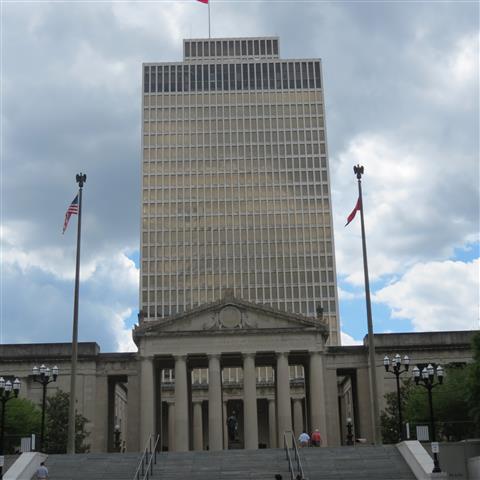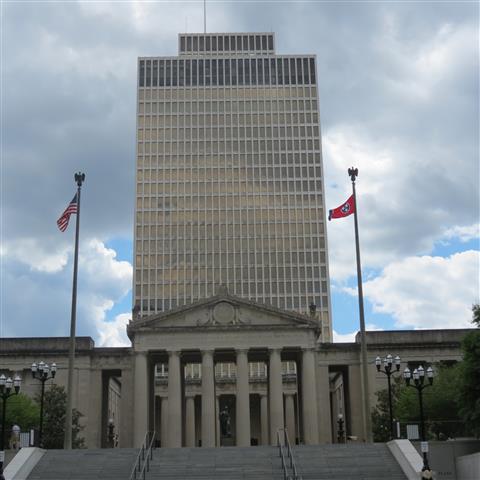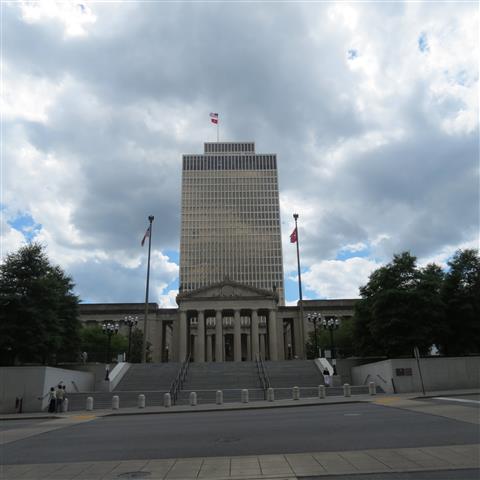


The State Capitol was designed by renowned Philadelphia architect William Strickland, who modeled it after a Greek Ionic temple. The lantern is a copy of the Choragic Monument of Lysicrates in Athens. The cornerstone was laid on July 4, 1845 and the building was completed fourteen years later in 1859. The building is one of Nashville's most prominent examples of Greek Revival architecture. It is one of only ten state capitols (along with those of Delaware, Hawaii, Louisiana, New Mexico, New York, North Dakota, Ohio, Alaska and Virginia) that does not have a dome.
Strickland died five years before the building's completion and was entombed in its northeast wall. His son, F. W. Strickland, supervised completion of the structure. William Strickland also designed the Egyptian Revival style Downtown Presbyterian Church, formerly known as First Presbyterian Church, Nashville. Samuel Dold Morgan (1798–1880), chairman of the State Building Commission overseeing the construction of the Tennessee State Capitol, is entombed in the southeast corner near the south entrance.
Monuments on the Capitol grounds include statues of two of the three Tennessee residents who served as President of the United States: Andrew Jackson by Clark Mills and Andrew Johnson by Jim Gray. The second President from Tennessee, James K. Polk, is buried in a tomb on the grounds, together with his wife, Sarah Childress Polk. Other monuments on the grounds include the Sgt. Alvin C. York Memorial by Felix de Weldon.


